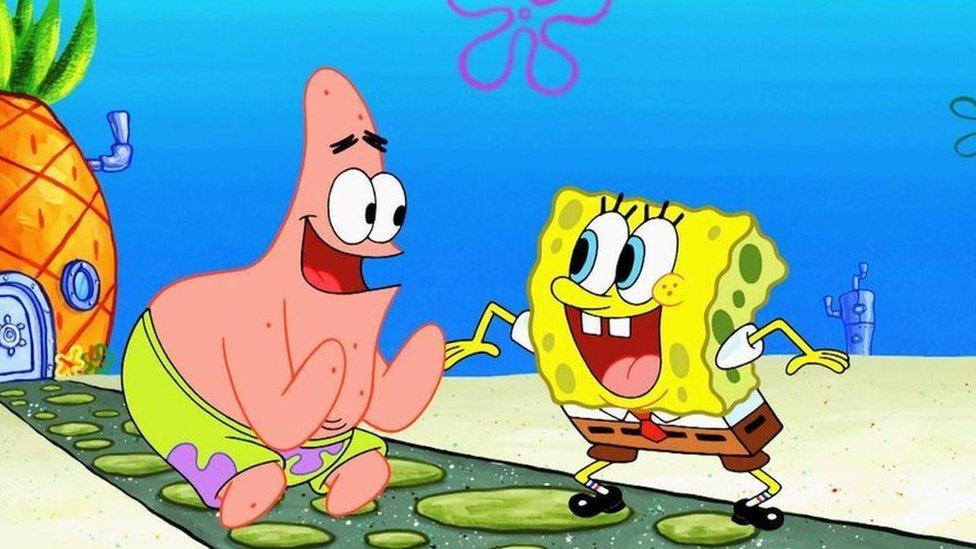The SpongeBob Phenomenon


If you’ve ever watched TV, you’ve probably heard of SpongeBob SquarePants. Created by Stephen Hillenburg, a marine biologist turned animator, the show premiered in 1999 and became a global hit. It follows SpongeBob, a cheerful yellow sea sponge, and his best friend Patrick Star, a goofy pink starfish, as they live in the underwater city of Bikini Bottom. Their adventures—whether flipping burgers at the Krusty Krab or jellyfishing—are packed with humor and heart.
The series’ been a cultural phenomenon, with Emmys, movies based on it, and even a Broadway musical. SpongeBob‘s laughter and Patrick‘s relaxed nature have turned them into icons. For Binge Library readers who are fans of entertainment and animation, this on-the-ground discovery feels like an endorsement of the show’s timeless legacy. Not every day that a cartoon finds its way into reality in the ocean!
NOAA’s Deep-Sea Adventure
So how did scientists discover these cartoon doppelgangers? It began with NOAA, an American government agency that researches and defends our oceans. They employ a specialized vessel called the Okeanos Explorer, capable of investigating the deep ocean. In 2021, as part of the Atlantic Seafloor Partnership for Integrated Research and Exploration (ASPIRE) campaign, the ship headed out to investigate the New England and Corner Rise Seamounts of the North Atlantic.
Seamounts are underwater mountains that never rise to the surface. They’re sort of secret ecosystems, complete with extraordinary animals such as sea sponges and starfish. The ASPIRE campaign, a collaborative effort involving the U.S., Canada, and Europe, seeks to chart these regions and study their animal life. From June 30 through July 29, 2021, the Okeanos Explorer employed remotely operated vehicles (ROVs) to dive deep and take photos of the seafloor. One of those dives resulted in a shocking discovery.
Word Count: 315
The Big Find
The team of the Okeanos Explorer on July 27, 2021, was surveying Retriever Seamount, located 200 miles off the coast of New York City, at a depth of 1,885 meters—that’s more than a mile underwater! Scanning the seafloor for the ROV was a rocky surface when its camera took a photo that gave everyone pause. Sitting side by side were a bright yellow sea sponge and a pink starfish, just like SpongeBob and Patrick.
Marine biologist Christopher Mah, a starfish specialist at the Smithsonian’s National Museum of Natural History, couldn’t help but share the discovery. He shared the photo on X, saying, “I usually avoid these refs..but WOW. REAL LIFE SpongeBob and Patrick!” His post (SpongeBob Discovery) went viral, and even the official SpongeBob account posted it, stating, “Best friends SpongeBob & Patrick spotted IRL in the ocean!” For SpongeBob SquarePants fans, this was pure magic.
Say Hello to Real-Life Stars
Let’s learn about these ocean animals. The yellow sea sponge is a Hertwigia, a kind of glass sponge with a light, silica skeleton. Unlike SpongeBob, who lives in a pineapple under the sea, actual sea sponges are anchored in place, sifting tiny food particles from the water. They’re really vital because they provide housing for other sea animals, such as tiny crabs or shrimp.
The pink starfish is probably Chondraster grandis, which is a large starfish that reaches a foot in diameter. Unlike Patrick, the always-sleeping starfish, this one hunts. It feeds on sea sponges, clams, and even coral, using its tube feet to capture prey and its stomach to digest it outside its body. Therefore, though the image appears to be a friendly meeting, the starfish could have been looking for the sponge lunch.
Cartoon vs. Reality
In SpongeBob SquarePants, SpongeBob and Patrick are best friends, always ready for an adventure. But in the actual ocean, it isn’t so buddy-buddy. Chondraster grandis starfish are predators, and sea sponges such as Hertwigia are usually on their menu. The picture may have them sitting side by side, but it’s probably a photo of a predator-prey encounter, not a friendship.
This is a wonderful reminder of how cartoons reduce nature to the fundamentals for entertainment. Stephen Hillenburg, the creator of the show, was a marine biologist, so he had the real thing but elected to make his characters endearing and silly. For fans, this reveal is a fun way to observe how animation takes inspiration from real life and adds its own creative twist. It’s like learning that your favorite program has a secret scientific side!
Why This Matters
This discovery isn’t just about cute cartoon look-alikes—it’s a big deal for science. Seamounts like Retriever Seamount are biodiversity hotspots, home to creatures we’re only starting to understand. Exploring them helps scientists learn about deep-sea ecosystems, which cover over 90% of the ocean but are mostly unexplored. Each ROV dive could reveal new species or behaviors, like how sea sponges and starfish interact.
The ASPIRE campaign harvests data that’s distributed to researchers globally, safeguarding marine life from the danger of deep-sea mining. For Binge Library readers, this tale demonstrates just how thrilling science can be, rivaling a Netflix show and revealing actual mysteries of our world that leave people awestruck and curious.
Word Count: 310
Fans Go Wild
When Christopher Mah’s X post went live on the internet, SpongeBob enthusiasts went crazy. Individuals referred to the sea sponge and starfish as “adorable” and joked that Bikini Bottom existed. Statements such as “Life imitates art!” and “We need a real Krusty Krab next!” filled social media. The post by the official SpongeBob account (SpongeBob IRL) received thousands of likes, indicating how much fans enjoyed this combination of science and popular culture.
For Binge Library readers, this fan mania is a reminder of how much we enjoy entertainment—it brings us back to those surprise moments such as this. Not every day does a cartoon get a science story going viral!
Leave a Reply Cancel reply